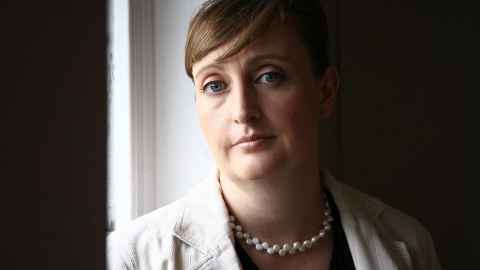Who’s driving the underground?
19 October 2018
A conversation with alumna Sharon Duffy, Head of Transport Infrastructure Engineering for Transport for London (TfL).

As a daily commuter, a visitor checking out the royal attractions, or on a stopover dashing from Heathrow Airport, it’s hard not to be impressed at the efficiency and capacity of London’s transport system.
And the smoothness of that experience is something that an Auckland Faculty of Engineering alumna significantly contributes to.
Sharon Duffy (CEng, FCIBSE, MIET) is a chartered engineer, a Fellow of the Chartered Institution of Building Services Engineers and a Member of the Institution of Engineering and Technology.
She is Head of Transport Infrastructure Engineering for Transport for London (TfL), leading a team of 500 professionals responsible for ensuring operational assets are maximised – she literally keeps the trains running on time.
As professional lead of the division responsible for setting the technical strategic direction of TfL, Sharon drives best practice, identifying and promoting best engineering techniques, technologies and systems. Her multidisciplinary team includes civil engineers and architects across Built Environment, Highways and Traffic, and Building Services Engineering.
Graduating from the University of Auckland in 1993 with a bachelors degree in Mechanical Engineering, Sharon left on her OE for the UK, where she worked in the manufacturing, building services and then rail sectors.
“After 22 years of living in London, I still love working here,” she says. “It has certainly offered some amazing opportunities in my professional and personal life that are unique to this incredible city.”
But despite making her life on the other side of the world, Sharon is very aware of what she took away from New Zealand.

“Kiwi culture is egalitarian, and I have carried the values of being fair and consistent throughout my work and personal life,” she says.
“After graduating, my first engineering job was in the Fisher & Paykel Refrigeration Division, and I spent the first 12 weeks on the factory floor learning and performing all of the assembly tasks.
That experience of learning from all the people within an organisation was invaluable, and I still endeavour to engage with everyone in the team and find out their perspective and ideas.
“Fostering a culture of equal challenge and allowing everyone’s voice to be heard is very important for my team today.”
At the University of Auckland she was one of only four females in a class of around 100 people. Her own experience was inclusive, but she says the current dean’s goal of having women make up a third of undergraduates in the faculty is “fantastic”.
“It is extremely heartening that there is University senior management support to increase the representation of females in engineering.
“In the UK we're only celebrating the centenary of women’s suffrage, so we’re still playing catch-up. The UK's work-force statistics show that just 12 percent of engineers are females. At TfL we are slightly ahead of the curve with 16 percent and we have just adopted a target of 30 by 30. We think aiming to increase the proportion of women in engineering to 30 percent by the year 2030 is a stretch target.”
One of Sharon’s aims is to increase diversity and inclusion in her team and in the wider TfL engineering team. To this end, she has launched a new staff network group called Females in Transport Engineering. One of its goals is to ‘challenge and champion’ the organisation to ensure it tackles inequality and delivers on its commitment to improve gender diversity in engineering.
“Organisations need to employ a wide range of high-potential people, which encourages creativity and innovation and leads to great solutions to challenges. The call for increased diversity isn’t about promoting one gender or demographic over another – it’s about making sure that everybody has equal access to the opportunities the engineering profession offers; we all benefit from the results.”
As winner of ‘Best Woman Electrical and Mechanical Engineer’ in the 2015 European Women in Construction and Engineering awards, one of Sharon’s key takeouts was the importance of highlighting and sharing achievements.
“Women tend to hide their lights under a bushel when we should instead be shouting about our contributions. We tend to want to wait for everything to be perfect while our male colleagues jump in and apply for promotions or enter awards.
“The award didn’t change what I had achieved, but it reached people who might not have been aware of my career, my role and what I do. And I hope it encouraged women to look for and take up more opportunities.”
By Lisa Finucane
Ingenio: Spring 2018
This article appears in the Spring 2018 edition of Ingenio, the print magazine for alumni and friends of the University of Auckland.